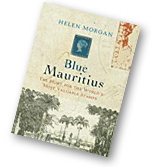Site content
Stamps, Intrinsic Merit of
- Functions
- Attitudes and Concept
- Alternative Names
- Intrinsic Merit of Stamps
- Summary
During the late nineteenth century, critics of stamp collecting began to focus on the high prices paid for rarities – those 'dirty little scraps of paper' – and on their relative intrinsic value.
'Intrinsic' means 'belonging to a thing by its very nature'. Used in relation to stamps, the phrases 'intrinsic value' or 'intrinsic merit' were commonly used to mean the base value of stamps – the sum for which they could have been bought when first issued, available to any purchaser over the counter in a post office. The intrinsic value of stamps was acknowledged to be small. A one penny stamp had an intrinsic value of one penny.
In reminiscences published in the Stamp Collectors' Fortnightly in 1900, philatelist Walter Nathan described the development of the free market and the rise of philatelic auctions. Before the days of auctions, he stated, it had been difficult to quickly realise the financial value of stamps, that is, convert them into cash. By the late 1890s auctioneers were more inclined to offer cash advances to philatelic clients wishing to sell, indicating that 'from a merely fancy value' they had become a'pawnable commodity'. Stamps had attained an acknowledged base value beyond the original face value – a value improved by stable supply and demand.
Bibliography
Journal Notes
- '[On stamps and their followers]', The Philatelic Record, vol. 13, no. 150, June 1891, pp. 143-44. [ Details... ]
- '[We are all mad, it seems!]', Stamp Collectors' Fortnightly, vol. 4, no. 90, 5 March 1898, p. 112. [ Details... ]
Prepared by: Helen Morgan
Created: 2 April 2006, Last modified: 8 July 2006
